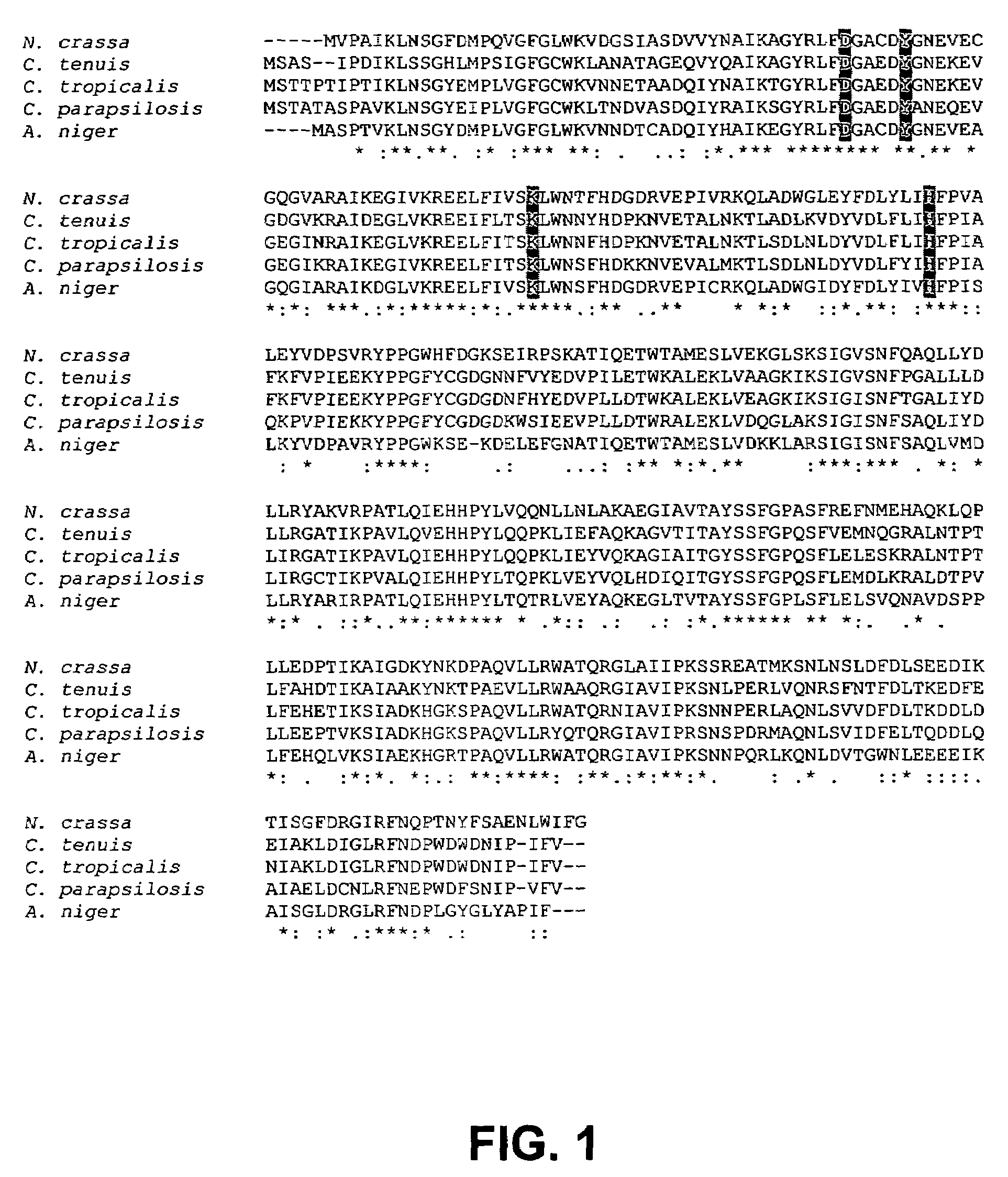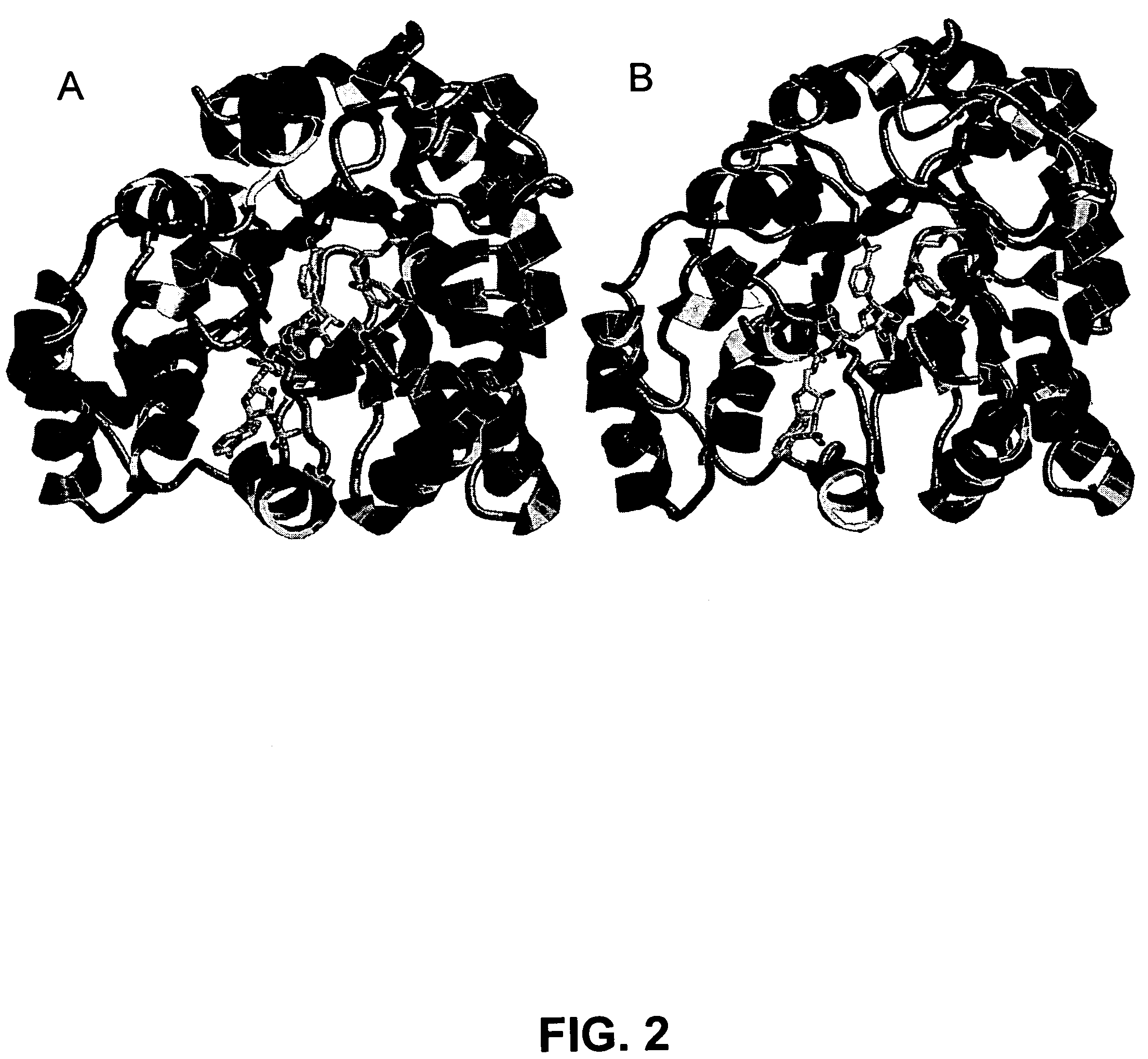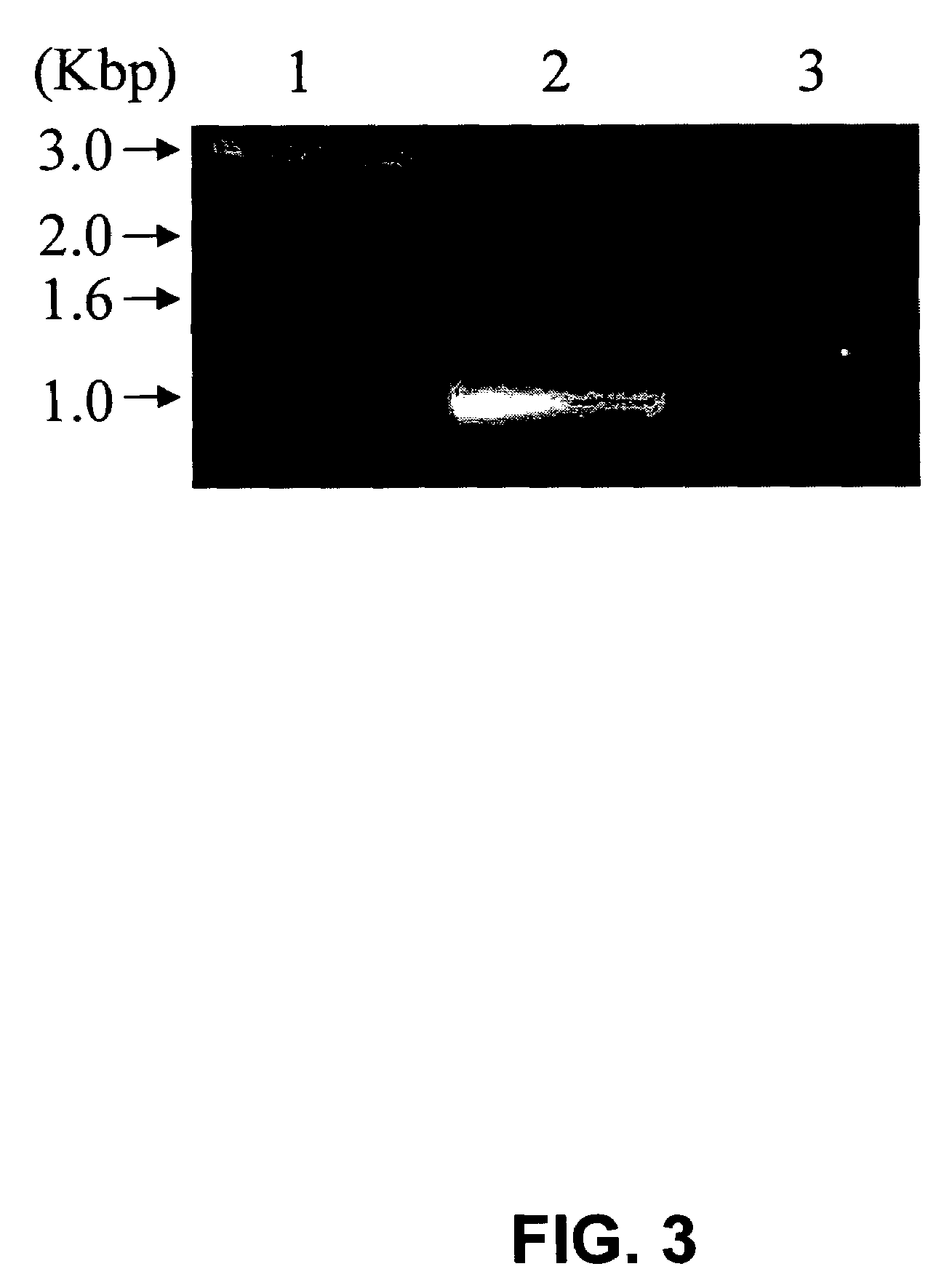Highly active xylose reductase from Neurospora crassa
a neurospora, high-active technology, applied in the direction of microorganisms, biofuels, enzymes, etc., can solve the problems of large number of proteins, including possible xrs, unidentified
- Summary
- Abstract
- Description
- Claims
- Application Information
AI Technical Summary
Benefits of technology
Problems solved by technology
Method used
Image
Examples
example 1
[0077]Identification of xyl1 gene in N. crassa. Protein sequences were downloaded from NCBI for the C. tenuis (gb|AAC25601.1|) and C. tropicalis I-II (dbj|BAA19476.1|) xylose reductases. These sequences were individually used in a protein-protein BLAST search against the N. crassa genome. Several hypothetical protein sequences had more than 35% sequence identity with both C. tenuis and C. tropicalis XRs including NCU 08384.1 (gb|EAA34695.1|) (52.5% average identity), NCU 01906.1 (gb|EAA36301.1|) (36% average identity), NCU 04510.1 (gb|EAA27685.1|) (35.5% average identity), and NCU 04923.1 (gb|EAA30135.1|) (39% average identity). The sequence with the highest homology in both searches was hypothetical protein NCU 08384.1 (gb|EAA34695.1|). This protein sequence was used in a subsequent BLAST search against the non-redundant gene database. Out of the top ten hits, 6 sequences were identified as D-xylose reductases and the remaining 4 were hypothetical proteins without any assigned func...
example 2
[0078]Homology Modeling. There is a high-resolution x-ray crystal structures available for C. tenuis XR complexed with NADH (1M13). Additionally, the structure of human aldehyde reductase (2ALR) has been solved by X-ray crystallography and it shares 40% sequence identity with ncXR. These structures were chosen as templates because they both had better than 40% sequence identity with ncXR, shared the same basic (α / β)8 barrel fold, and had high resolution structures. The structural homology model was built as disclosed herein, resulting in a model structure of ncXR. The completed model was very similar to the C. tenuis crystal structure in overall fold and binding of coenzyme as depicted in FIG. 2. The RMS deviation between the α-carbons of the backbone between C. tenuis XR and the model structure was only 0.486 Å with the most obvious differences being between the C-terminal residues after 311 and 308 of C. tenuis x-ray structure and ncXR model respectively. If these residues are not...
example 3
[0080]Cloning and recombinant expression of N. crassa XR. The gene (AABX01000063) encoding the identified N. crassa XR was predicted from the whole genome sequencing in 2003. The total gene complete with two introns is 1402 bp and the predicted introns cover bases 143-459 and 1251-1366. With these introns removed, the gene is 969 bp long with the second splice site just 36 bp from the end of the gene. To ease in the cloning of the gene with the introns removed and to verify that the gene is indeed expressed as an mRNA, RT-PCR was utilized. The total RNA from N. crassa was isolated after induction with xylose and then used in an RT-PCR to amplify the XR gene from the mRNA as discussed in the Materials and Methods. Because the final exon was just 36 bp, the reverse primer for the RT-PCR encoded the entire exon plus four residues of the previous exon, such that only the processed mRNA with introns removed would be amplified. FIG. 3 shows the RT-PCR product obtained that is approximatel...
PUM
| Property | Measurement | Unit |
|---|---|---|
| mass | aaaaa | aaaaa |
| optimal temperature | aaaaa | aaaaa |
| optimal temperature | aaaaa | aaaaa |
Abstract
Description
Claims
Application Information
 Login to View More
Login to View More - R&D
- Intellectual Property
- Life Sciences
- Materials
- Tech Scout
- Unparalleled Data Quality
- Higher Quality Content
- 60% Fewer Hallucinations
Browse by: Latest US Patents, China's latest patents, Technical Efficacy Thesaurus, Application Domain, Technology Topic, Popular Technical Reports.
© 2025 PatSnap. All rights reserved.Legal|Privacy policy|Modern Slavery Act Transparency Statement|Sitemap|About US| Contact US: help@patsnap.com



